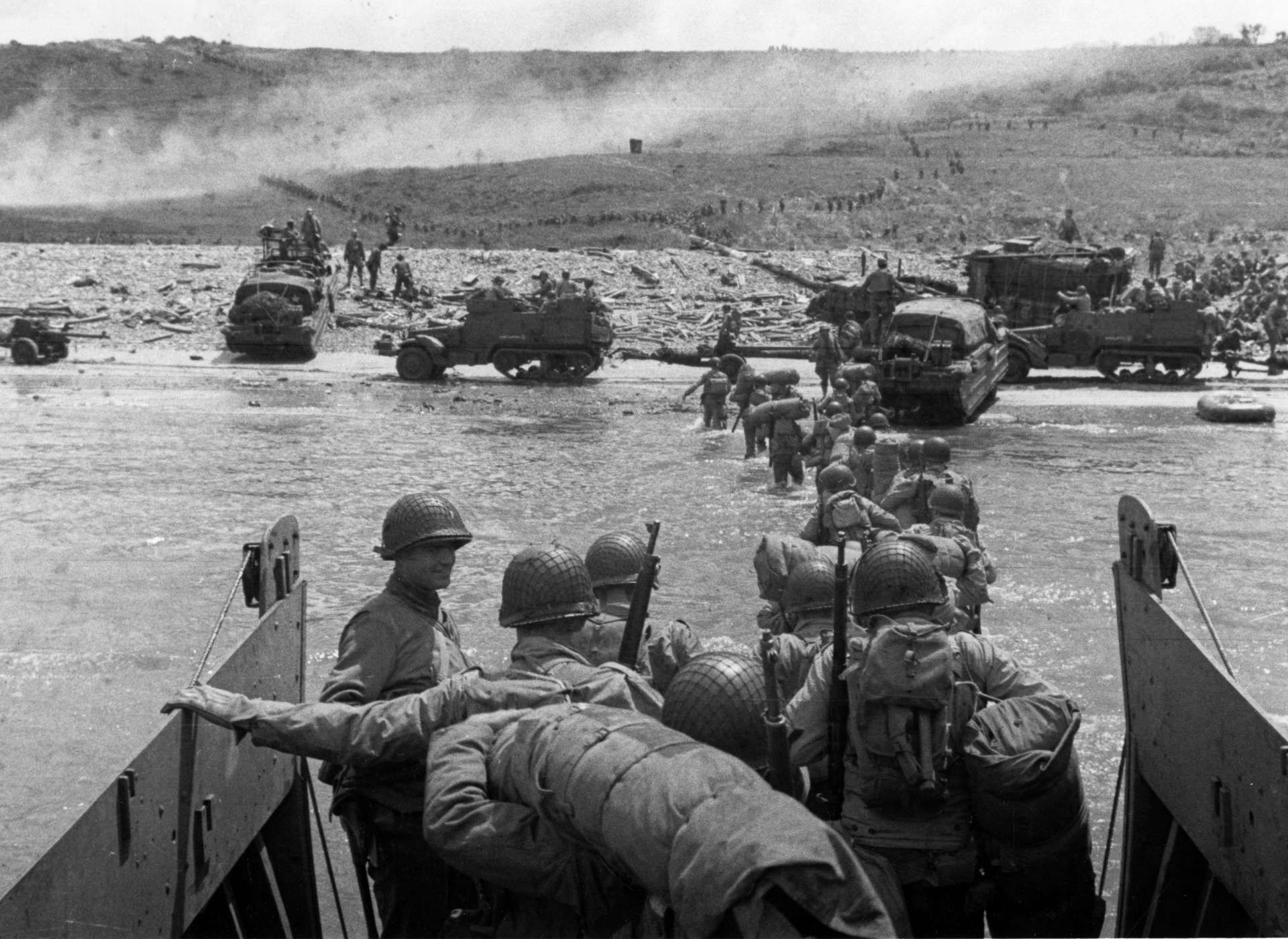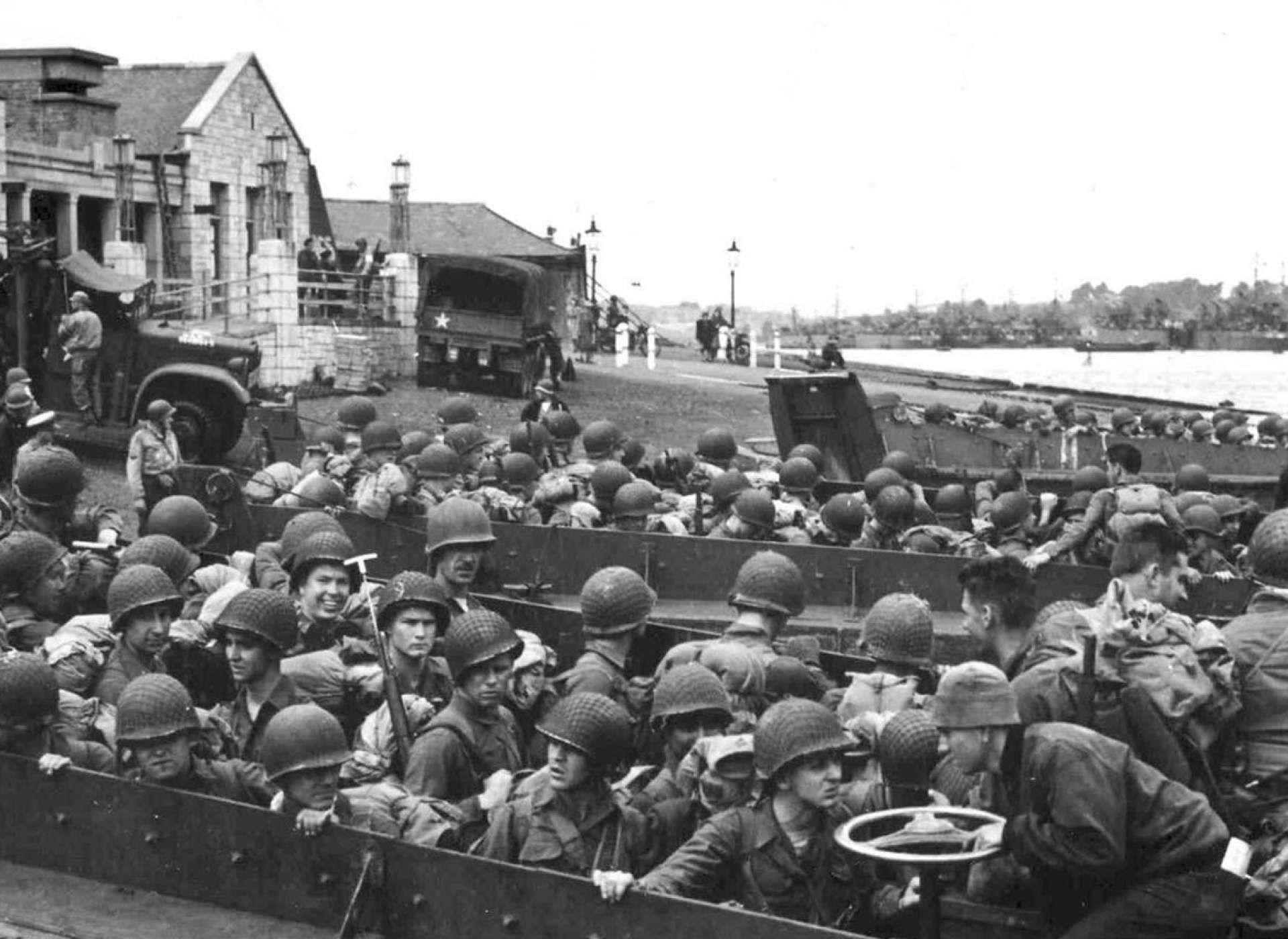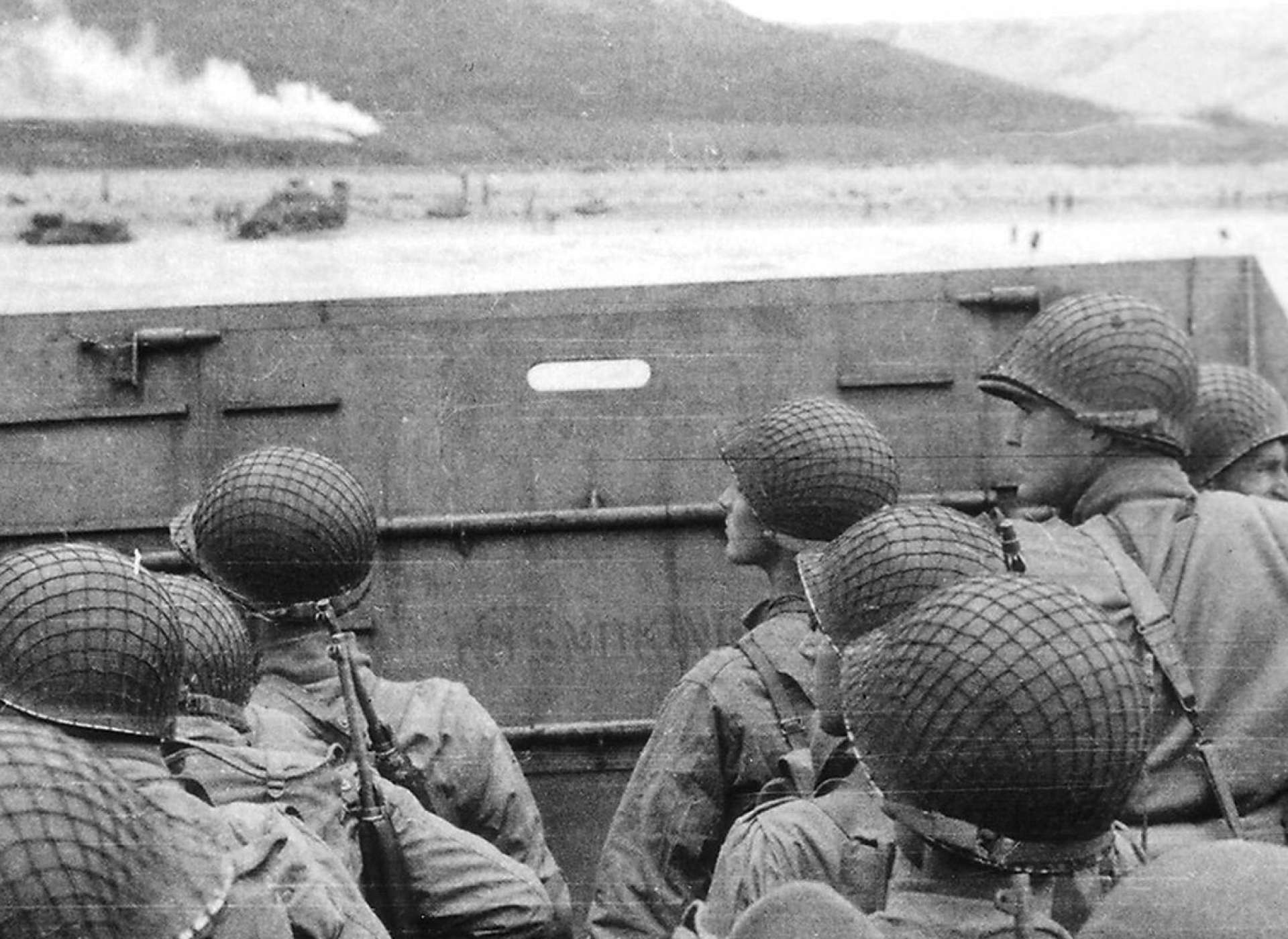D-DAY: THE ALLIED INVASION OF NORMANDY
The Allied assault in Normandy to begin the Allied liberation of Nazi-occupied Western Europe was code-named Operation Overlord. It required two years of planning, force and logistics build-up, and extensive training by the United States and Great Britain in the British Isles. Overlord was one of the most heavily guarded secrets of the war, and it benefitted from a sophisticated Allied deception effort to fool Nazi leaders of the true Allied objective. In the leadup to the operation, a combined Anglo-American air campaign and liaison with the French Resistance helped set the conditions for the operation and ensured that the Allies would control the skies over the front in Normandy and delay German counterattack forces.
With the build-up complete, Allied forces were poised for the assault at the start of June 1944, but poor weather caused a delay. Finally, on the morning of June 5, 1944, in a meeting with his American and British subordinates, U.S. General Dwight Eisenhower, the Supreme Commander of the Allied Expeditionary Force, announced, “O.K. We’ll go.” The “departure day” or D-Day for the operation was set for June 6.
General Eisenhower’s decision put into motion an armada of over 7,000 naval vessels, including 4,000 landing craft and 1,200 warships, to cross the English Channel toward Nazi-controlled Normandy, France. That night 822 aircraft, carrying parachutists and towing gliders, deployed the airborne troops of one British and two American divisions over landing zones in Normandy. Intended to be the vanguard of the operation, the landing of those 23,400 airborne troops just after midnight, early on June 6—D-Day, proved a tremendous success, protecting the flanks of the landing forces and facilitating their continued advance.
From the sea, after preliminary naval bombardment and bombing attacks by Allied aircraft, amphibious assault troops began to land on the beaches of Normandy at 6:30 in the morning. American divisions landed at beaches code-named Utah and Omaha, British divisions at Sword and Gold, and the Canadians at Juno. Although caught by surprise, the Germans fought fiercely, but on four of the five beaches, casualties in the assault echelons were less than some Allied leaders had feared. On Omaha Beach, American troops suffered the heaviest casualties and had a difficult fight to break through German defenses on the bluffs and move inland; despite the tough fight, however, over 34,000 Americans came ashore at Omaha alone on June 6.
Whether by parachute, glider, or amphibious assault craft, in all, nearly 160,000 Allied troops landed in Normandy on D-Day. By nightfall on D-Day, Allied assault troops across Normandy had suffered over 10,300 casualties—killed, wounded, and missing— of which approximately 2,400 were on Omaha Beach.
In addition to the massive naval armada, supporting the operation were about 12,000 Allied aircraft. In addition to major forces from the United States, the United Kingdom, and Canada, 12 other Allied nations or contingents were part of the largest and most complex amphibious invasion in history.
Allied assault troops gained a foothold on the Continent of Europe on D-Day and fought to gradually expand their beachhead. By the end of June, the Allies had landed over 850,000 troops, 570,000 tons of supplies, and nearly 150,000 vehicles across the beaches of Normandy. There would be months of hard fighting in Europe before the Nazis finally surrendered in May 1945, but the D-Day invasion gave the Allies the success they needed to initiate the campaigns that would lead to the liberation of Occupied Europe.
A Note on Numbers:
It is important to note that many of the numbers associated with D-Day assault forces and their casualties are approximations, and some sources vary widely.
As Stephen Ambrose observed, “No exact figures are possible, either for the number of men landed or for casualties, for D-Day alone.” (Ambrose, 576n)
In the U.S. Army’s official history, Cross-Channel Attack, Gordon Harrison noted that the various numbers of American soldiers killed are estimations since not all the reports agree. Concerning the number of just those killed on Omaha Beach, not to mention those wounded, Harrison assessed: “Under the Army's present casualty reporting system, it is unlikely that accurate figures of D-Day losses by unit will ever be available. The V Corps History gives D-Day losses as 2,374, of which the 1st Division lost 1,190, the 29th Division 743, and corps troops 441. The after action report of the 1st Division and the 29th Division history both scale down their own losses slightly.” (Harrison, 330)
Sources for Further Exploration:
- Ambrose, Stephen E. D-Day June 6, 1944: The Climactic Battle of World War II. New York: Simon and Schuster, 1995.
- Chandler, David G. and Collins, James L. Eds. The D-Day Encyclopedia. New York: Simon and Schuster, 1994.
- Dwight D. Eisenhower Presidential Library, World War II: D-Day, The Invasion of Normandy. https://www.eisenhowerlibrary.gov/research/online-documents/world-war-ii-d-day-invasion-normandy
- Harrison, Gordon A. Cross-Channel Attack. Washington, D.C.: USGPO, 1993.
- Symonds, Craig L. Neptune: The Allied Invasion of Europe and the D-Day Landings. Oxford: Oxford University Press, 2014.
- U.S. Army Center of Military History, U.S. Army Campaigns in World War II: Normandy.
- U.S. Department of Defense. D-Day: The Beaches. (2016)
Primary Source Gallery
-

Soldiers coming ashore at Normandy on D-Day. (Image: National Archives and Records Administration, 111-SC-320902.)
-

-



